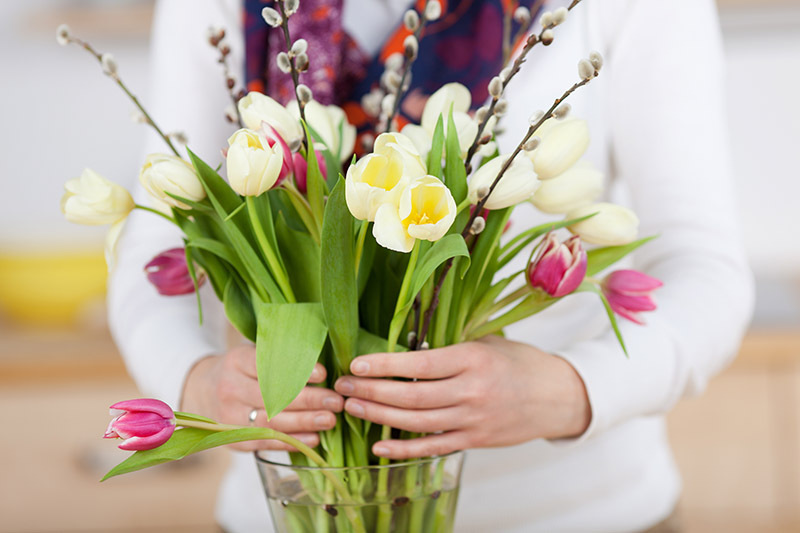Secrets to Prolong the Life of Your Cut Flowers
Posted on 14/08/2025
Secrets to Prolong the Life of Your Cut Flowers
There's nothing quite like a vibrant bouquet of cut flowers to brighten up your home and lift your spirits. Yet, many flower lovers find their blooms wilting far too soon. Wouldn't it be wonderful if your beautiful blooms could last just a little longer? With the right knowledge, you can keep your cut flowers fresh and lively for days--sometimes even weeks--beyond the usual. In this in-depth guide, we'll unveil the best secrets to extend the longevity of your fresh cut flowers, ensuring your arrangements remain stunning.

Why Do Cut Flowers Fade Quickly?
Before diving into the secrets to prolong the life of your cut flowers, it's helpful to understand why these beautiful blooms often wilt so quickly. When flowers are cut from their roots, they lose their connection to a natural water and nutrient supply. As a result, several factors start to work against them:
- Reduced water uptake due to air or bacteria blocking the stem
- Lack of nutrients usually supplied by the plant
- Natural process of decomposition begins
- Environmental factors like heat, light, and draft
But with simple steps and a little insider knowledge, you can counteract these processes and maximize the vase life of your cut flowers.
Harvesting and Selecting the Healthiest Flowers
Choose Fresh, Quality Blooms
Whether you're cutting flowers from your own garden or purchasing them from a market, start with the healthiest flowers possible. Freshly cut flowers that haven't begun to wilt or show discoloration will always last longer. When choosing blooms:
- Look for tight buds: Blooms that are just starting to open will last longer.
- Avoid brown or mushy stems: Healthy stems should be firm and green.
- Check the leaves: Leaves should be vibrant and not drying or curling.
Best Time to Cut Flowers
Timing matters greatly for the longevity of cut flowers. The ideal time to pick garden flowers is in the early morning, when their stems are fully turgid and hydrated. Early morning dew helps lock in moisture, reducing stress on the flowers. Alternatively, pick them during late afternoon if morning isn't possible, but avoid midday when the heat can cause dehydration.
Proper Cutting Techniques for Longevity
Use Clean, Sharp Tools
Always use a sharp, clean pair of scissors, pruners, or a knife. Dull blades crush stems, making it harder for flowers to uptake water, while dirty tools introduce bacteria that shorten the vase life of cut flowers.
Cut at an Angle
Cut flower stems at a 45-degree angle rather than straight across. This increases the surface area for water absorption and prevents the stem from sitting flat on the bottom of your vase, where water flow may be restricted.
Immediate Conditioning
Pro-tip: Place stems in lukewarm water right after cutting. This prevents air bubbles that can block water uptake--also known as "air embolism."
The Importance of Clean Vases
One often overlooked secret for longer-lasting cut flowers is vase hygiene. Dirty vases harbor bacteria that accelerate the decomposition of stems, leading to quicker wilting. Follow these steps:
- Thoroughly wash vases with hot, soapy water and rinse well before use.
- Use a small amount of bleach (about a teaspoon to a quart of water) for a deeper clean, especially if the vase has been previously used.
- Ensure your vase is completely rinsed and dry before adding new water or flowers.
Optimal Water and Flower Food Tips
Use the Right Water Temperature
Lukewarm water is usually best for most cut flowers, as stems absorb it more easily than cold water. Exception: bulb flowers (like tulips and daffodils) prefer cool water.
The Essential Flower Food Recipe
Commercial flower preservatives are designed to nourish your blooms and keep bacteria at bay. If you don't have a commercial floral solution, you can make your own with these three simple components:
- Sugar--Nourishes the flowers
- An acidifier (lemon juice or vinegar)--Balances pH for easier water uptake
- Bleach (a drop or two)--Inhibits bacterial growth
Homemade Recipe: Mix 1 quart of lukewarm water with 2 tablespoons lemon juice, 1 tablespoon sugar, and 1/2 teaspoon bleach.
Daily Maintenance Secrets for Maximizing Vase Life
- Change the water every 1-2 days. Stagnant water is a breeding ground for bacteria that clog stems and reduce lifespan.
- Re-cut the stems every 2-3 days to open up new channels for water absorption. Always cut under running water or submerge the stems as you cut to prevent air bubbles.
- Remove spent blooms and decaying foliage. Old flowers release ethylene gas, which will hasten the decay of healthy flowers.
- Keep leaves out of water. Before arranging, strip any leaves below the waterline. Submerged leaves rot quickly and breed bacteria.
Arranging for Long-lasting Beauty
Avoid Overcrowding
Packing stems too tightly can prevent adequate water flow and promote the growth of microorganisms. Give each flower enough space to breathe and absorb water freely.
Proper Vase Selection
The right vase can make a big difference. Use a vase that supports the stems but isn't so narrow that they're crushed together. The water level should cover the bottom third to half of the stems.
Mix with Care
Some flowers are "heavy drinkers" and need more water, while others can release chemicals that reduce the vase life of their neighbors. For example, daffodils secrete a substance toxic to other flowers. If you wish to include them in a mixed bouquet, soak daffodil stems in water alone for at least six hours, then rinse before adding them to companions.
Environmental Factors and Placement Tips
Keep Flowers Cool
Heat accelerates wilting and causes flowers to lose moisture rapidly. Place your vase in a cool spot, away from direct sunlight, radiators, heating vents, or appliances that emit heat.
Minimize Drafts and Avoid Fruit
- Avoid drafts: Breezes can dehydrate flowers. Keep arrangements away from fans, open windows, or air conditioners.
- Keep away from ripening fruit: Fruits (like bananas and apples) emit ethylene gas, which speeds up flower aging. Store arrangements far from your fruit bowl.
Secrets and Tips for Specific Types of Cut Flowers
Roses
- Re-cut stems underwater to prevent air bubbles.
- Remove all leaves below the waterline.
- Use a vase tall enough to support their heavy blooms.
Tulips
- Use cold water in the vase.
- Keep away from fruit and direct sunlight.
- Support drooping flowers by wrapping them in newspaper and leaving them upright in water for an hour.
Hydrangeas
- Crush the bottom inch of the stem to maximize water intake.
- Submerge wilted hydrangea heads in cool water for a revival.
Daffodils
- Let stems "bleed" in a separate vase before adding to a mixed bouquet.
Common Myths About Extending Cut Flower Life
There's no shortage of traditional advice on prolonging cut flower life, but not all of it is effective. Here are some common myths debunked:
- Add aspirin: While aspirin can lower water pH, it's not as effective as acidifiers like lemon juice or vinegar.
- Pennies in the vase: Old pennies (pre-1982) may have some anti-bacterial copper effect, but it's inconsistent and minor.
- Sugar alone works: Sugar feeds flowers, but without an acidifier and anti-bacterial agent, it also feeds bacteria.

Key Takeaways for Prolonging Your Cut Flower Life
- Select the freshest blooms and cut them at the right moment--preferably in the cool of the morning using sharp, sanitized tools.
- Clean your vases thoroughly to prevent bacterial growth that can quickly decay stems.
- Use a balanced flower food, whether store-bought or homemade, and keep your water clear and replaced regularly.
- Trim and maintain your blooms by cutting stems every few days and removing decayed parts promptly.
- Choose the best environment--cool, draft-free, away from direct light and fruit bowls--to allow your flowers to thrive.
Final Thoughts: Unlock the Longevity of Your Cut Flowers
Beautiful flowers needn't be a fleeting pleasure. By following these secrets to prolong the life of your cut flowers, you ensure that every bouquet, whether gifted or self-picked, will grace your home with fresh color and fragrance for as long as possible. Share these tips with fellow flower enthusiasts, and you'll be doubly rewarded with lasting beauty and the satisfaction that comes with botanical success!
Keep these tricks in mind, and soon your guests will be asking for your secrets to longer-lasting cut flowers--and you'll have all the answers!
Latest Posts
The Ultimate [AREA] Postcode Guide to Same-Day Flower Delivery
Peony Flowers: Delving Into Their Rich Symbolic Meanings
Transform Your Workspace with Easy-Care Office Plants






